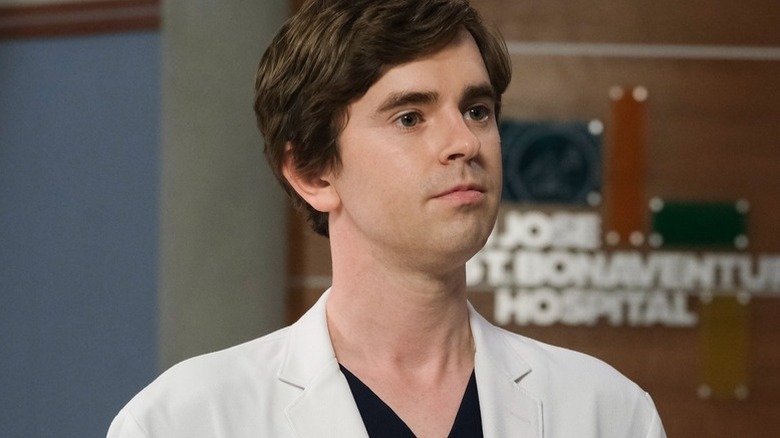
In the world of television, longevity is both a coveted achievement and a delicate balancing act. For seven seasons, “The Good Doctor” captivated audiences with its unique protagonist, Dr. Shaun Murphy, a young surgeon with autism and savant syndrome whose extraordinary medical abilities and distinctive perspective transformed the fictional St. Bonaventure Hospital. Yet, as with many beloved series before it, the curtain eventually fell on this groundbreaking medical drama. The announcement of its cancellation after seven seasons left many fans wondering: why would ABC end a show that had broken barriers in representation and storytelling? The answer, as with most television decisions, lies at the intersection of art, business, and the natural evolution of storytelling.
The Streaming Effect: Changing Distribution Models
The television landscape has transformed dramatically during “The Good Doctor’s” run. When the series premiered in 2017, traditional network television still dominated, though streaming services were gaining ground. By 2024, the paradigm had shifted substantially, with viewers increasingly consuming content through streaming platforms rather than adhering to weekly broadcast schedules.
This evolution in viewing habits has forced networks like ABC to reevaluate their programming strategies. Limited series, miniseries, and shorter overall runs have become more attractive as they align better with binge-watching behaviors and provide cleaner entry points for new viewers discovering shows through streaming catalogs.
Additionally, ABC’s parent company, Disney, has increasingly focused resources on building content for its streaming platform, Disney+. This strategic pivot necessitates difficult decisions about which network shows continue to receive substantial investment and which conclude to free resources for new ventures.

Legacy Consideration: Ending on a High Note
Television history is replete with cautionary tales of series that continued beyond their creative prime, damaging their legacy in the process. Shows like “Scrubs,” “The Office,” and “Dexter” are often cited by critics as examples of series that suffered from extended runs that diminished their overall cultural impact.
The decision to end “The Good Doctor” after seven seasons may reflect ABC’s desire to preserve the show’s legacy as a groundbreaking series that meaningfully advanced representation of neurodiversity on television. By concluding the series while it still maintained creative quality and audience respect, ABC ensured that “The Good Doctor” would be remembered for its innovations rather than for a prolonged decline.
Industry Cycles: Making Room for New Voices
Television networks operate within programming cycles that necessitate regular renewal. Just as “The Good Doctor” represented a fresh voice when it premiered in 2017, its conclusion creates space for new concepts and perspectives in ABC’s programming lineup. This natural cycle of television ensures that the medium continues to evolve and address contemporary themes and issues.
The decision to end established shows, even those with devoted followings, reflects the industry’s need to continually reinvent itself. Each concluded series creates opportunities for new creators, performers, and stories to reach audiences. In this light, the cancellation of “The Good Doctor” can be viewed not merely as an ending but as part of television’s ongoing renaissance.
The Pandemic’s Production Impact
The COVID-19 pandemic significantly disrupted television production, with “The Good Doctor” being no exception. The series faced production delays, increased costs related to safety protocols, and creative challenges in portraying a medical environment during a real-world health crisis. These disruptions created both practical and storytelling complications that may have influenced long-term planning for the series.
Additionally, the pandemic accelerated shifts in viewer behavior and network strategies. As audiences increasingly embraced streaming platforms during lockdowns, traditional broadcast networks faced accelerated pressure to adapt their business models. These industry-wide realignments likely factored into ABC’s strategic decisions about which series to continue investing in and which to conclude.
Conclusion: A Dignified Farewell Rather Than a Cancellation
When viewed holistically, the end of “The Good Doctor” after seven seasons represents less a traditional “cancellation” and more a mutually determined conclusion. The convergence of natural audience decline, increasing production costs, completed narrative arcs, changing distribution models, legacy considerations, and industry evolution created a situation where ending the series became the most logical decision for all stakeholders.
For fans of the show, this perspective offers some consolation. Rather than seeing the series’ conclusion as a premature termination, it can be appreciated as a deliberate choice to complete Dr. Shaun Murphy’s journey with the same care and intention that characterized its telling. In the complex ecosystem of television, success isn’t measured solely by longevity but by impact and integrity—metrics by which “The Good Doctor” can certainly be deemed a remarkable achievement.
As the final episodes aired, they did not simply represent the end of a television program but the completion of a groundbreaking narrative that changed perceptions, advanced representation, and touched millions of viewers worldwide. In television, as in medicine, sometimes the most difficult but necessary decision is knowing when to say goodbye.
